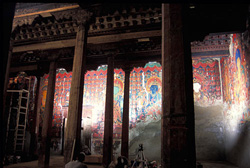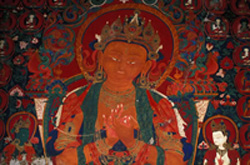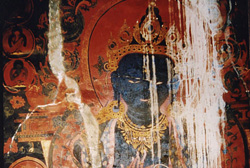
Moultonborough Academy, Moultonborough, New Hampshire
The Five Themes of Geography Meet the Himalayan Region
PLACE
Curriculum Standard: SS:GE:12:2.5 “Students will recognize that places and regions serve as symbols for individuals and societies. www.ed.state.nh.us/frameworks
In 1950, the Chinese invaded Tibet. Religious rituals were outlawed and 6,000 monasteries were destroyed. This video speaks to one that survived. It starts with Lama Guru traveling to Thubchen Monastery in the province of Mustang. Mustang became a part of Nepal in 1950. Note the landscape and the route that he must travel.
Assignment: We will watch the video, "Lost Treasures of Tibet" in its entirety. Pay particular attention to the techniques for restoring the monastery.
The focus questions are as follows:
1. Watch for artifacts. Write them down as you are watching the video. You may return to this question throughout the video.
2. Thubchen is a Buddhist monastery. What is the main concept of Buddhism?
3. Where is Mustang located?
4. What is the ethnicity of Mustang?
5. Religious rituals were forbidden in Tibet. Why?
6. What are butter lamps?
7. Thubchen Monastery was offered foreign funds for the restoration. Why did the village want time to consider the offer?
8. Look for the artistry in the building and its restoration. What did they say about the Newars?
9. Be alert to the techniques regarding construction/restoration of the walls. Is there any similarity to what we use in the west?
10. As they worked on the 15th century painting, what was the discussion about the artist?
11. How did the townspeople look at the art work?
12. What is the threat to the monastery?
|
 Tubchen's Chapel http://www.pbs.org/teachers/ |
|

